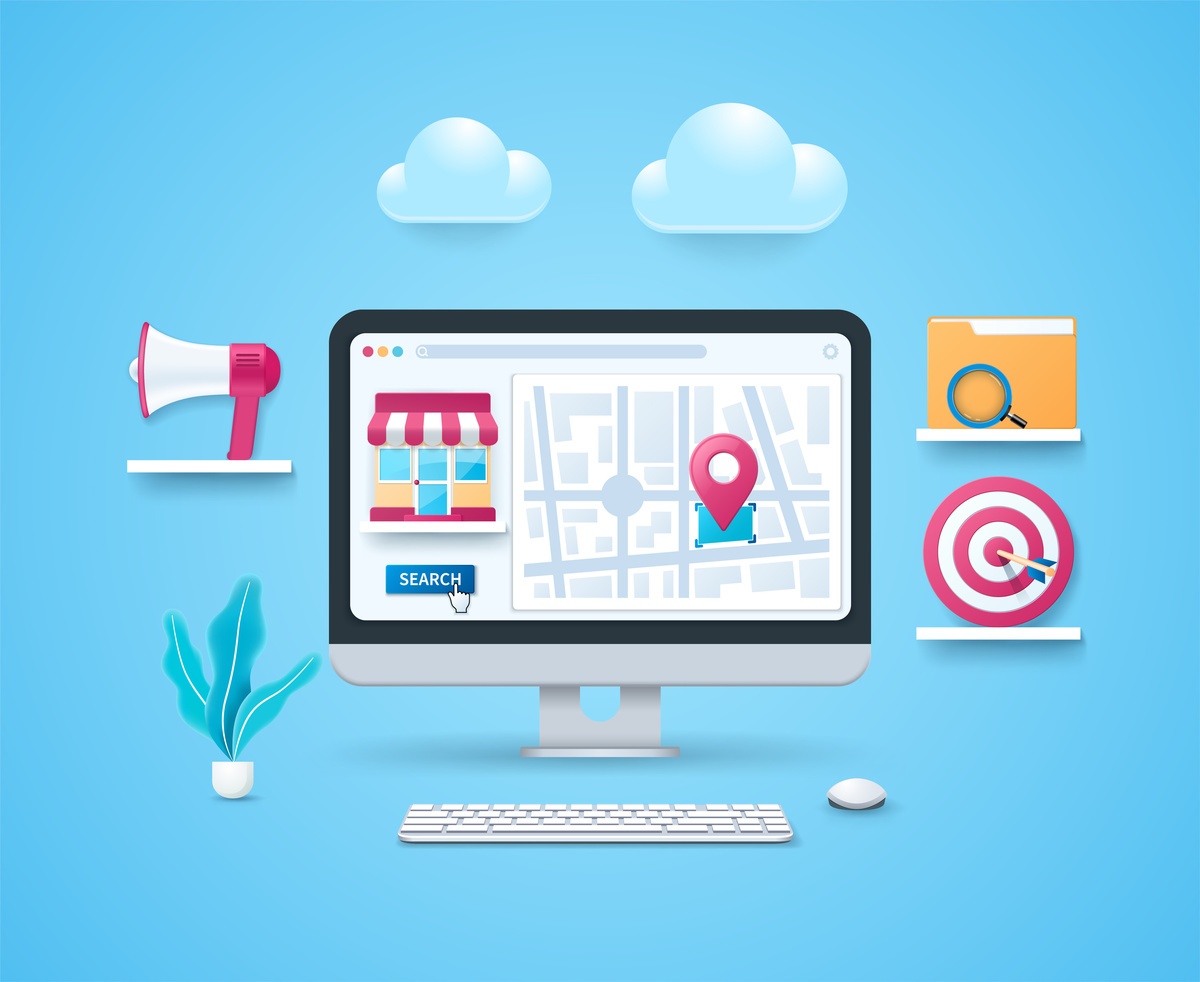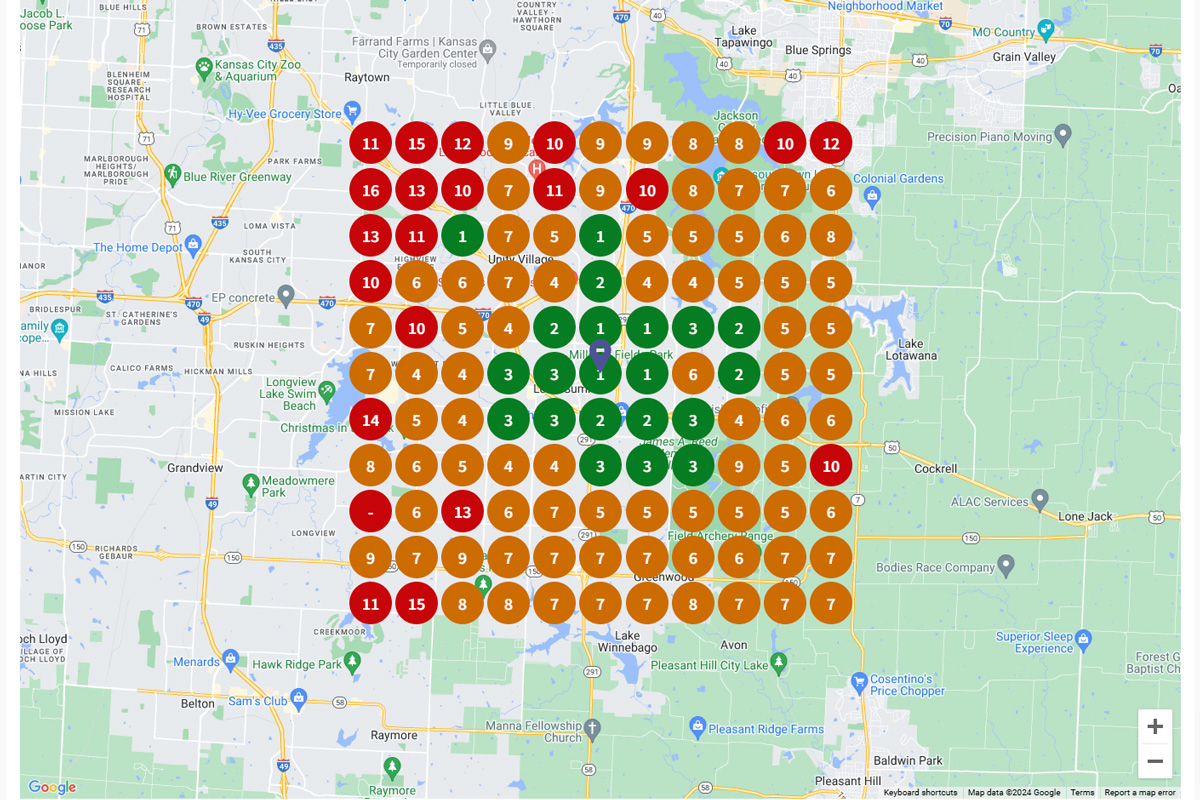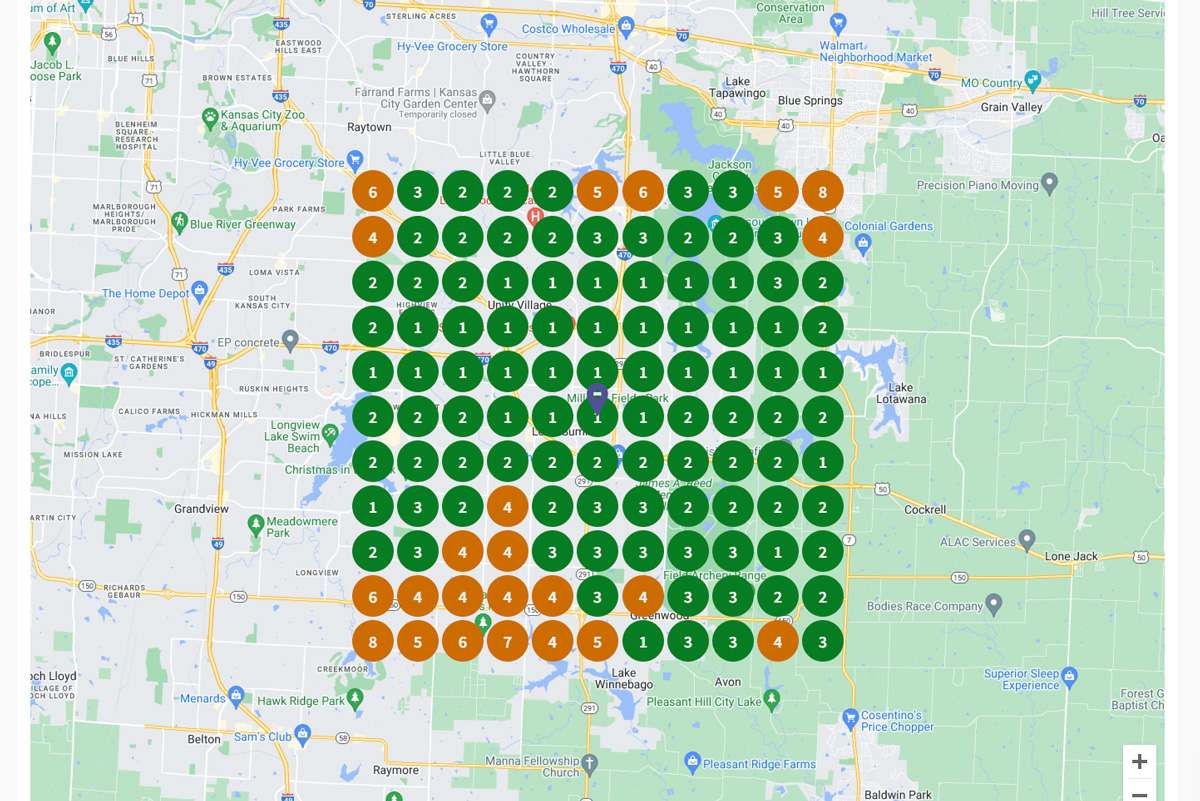What is the Proximity Bias (Factor) in Google Search and How Does It Impact Local SEO
Over the past few years, multiple studies have been released with data that shows anywhere from one-third to 46% of all Google searches have local intent, meaning the searcher is searching for a product/service nearby or in a specific geographic area.
When Google determines that there is local search intent for a specific query, it will often show the top three relevant local businesses in a map pack, typically at, or near, the top of the search results. Gaining entry into this local map pack is influenced by numerous factors, one of which is proximity. Keep reading to learn more about the proximity bias within Google search and how it can impact your small business search engine optimization (SEO) strategies.
Table of Contents
- What is Google’s Proximity Factor?
- How to Leverage the Proximity Bias
- How the Vicinity Update Affected Proximity Bias
- Test the Impact of the Proximity Bias on Your Business
- Competition Density's Impact on the Proximity Bias
- Can a Local Business Overcome Search Engine's Proximity Factor
- Contact a Local SEO Specialist to Help Improve Your Small Business SEO
What is Google’s Proximity Factor?
Google’s proximity bias dictates that the distance between the physical location of a searcher and a relevant business for the search query is a ranking factor in local search.
This is great for businesses with a physical store near the searcher’s location.
For example, when a person types in “coffee” or “coffee near me,” the proximity bias works in favor of local coffee shops nearest to the searcher. Or, if another searcher was looking for “where to buy a hammer,” the local hardware shop down the street will be more likely to pull up than the hardware shop several miles away.
Google’s goal with the proximity factor certainly has a positive intent as Google’s algorithm believes if you are searching for something local, you will naturally prefer vendors closest to you. Thus, it adjusts the search results based upon that inherent belief. However, that may not always be in favor of the business.

For example, for a highly rated and well-established service-based business whose service area may extend through on large metro, or two or three towns, the proximity bias can negatively impact their ability to rank across their target service area.
As another example, a small company who could only afford office space on the outskirts of town would have an immediate disadvantage in comparison to their large competitor with prime real estate centrally located within the city.
How to Leverage the Proximity Bias
If your business is located in the same area as someone who is actively searching for the product or service you offer, the proximity bias can help to boost your rankings and visibility. Your business will have a greater chance of showing up in their search results since you are closer to the person conducting the search.
As a result, we encourage our small business clients to keep the proximity factor in mind when selecting office space or considering opening additional locations.
Additionally, if your competitors are benefiting from the proximity bias, you must make sure your other SEO ducks are in order to maintain a competitive edge, including items like quality content, error-free site structure, review collection, listings consistency, Google Business Profile Optimization, etc. If you want more SEO tips on those items, consider subscribing to our free monthly SEO newsletter.
How the Vicinity Update Affected Proximity Bias
Based on our research with our local business clients, the introduction of the “Vicinity Update” (affectionately named by the SEO community) by Google as a part of the November 2021 local search update clearly made Google’s existing proximity bias notably stronger.
This update makes it so that businesses that are close to the searcher rank better than businesses that are further away, even if that further away business is more legitimate, more highly rated, or even has better services. Of course, keep in mind that the proximity factor is only one of hundreds of factors that Google’s algorithms look at for calculating what results should appear for a given query.
Test the Impact of the Proximity Bias on Your Business
One of the best ways to check the proximity bias impact on your business is to sample rankings for your target keywords using a keyword rank tracking tool. Based on the combination of features and affordability, our preferred local rank tracking tool is BrightLocal which we've been using here at Igniting Business since 2017. BrightLocal allows you to run multiple reports that scan where your business’ website and Google Business Profile ranks within search engine result pages (including Google and Bing) based on searchers in different zip codes or cities.
Additionally, even more helpful for proximity bias analysis, BrightLocal also has a visual local search grid rank tracker that allows you to see your rankings overlayed on a map simulating visitors expanding out from your location (block by block if desired). Using this tool, you can see where your business ranks if a searcher is half a mile south of your location, 3 miles northeast, etc. This an excellent method to see to what extent your business is being impacted by the Proximity Bias.
Competition Density's Impact on the Proximity Bias
Keep in mind that your rankings and the extent of the proximity bias' impact will depend upon what keywords your pursuing, their associated inherent proximity weight, and the competition density for that category. Competition density is influenced by how many businesses in the local (and extended) geographic area are competing to rank for that keyword (or category of keywords).
Thus, some keywords can be much easier, or more difficult, to rank well within Google search. Compare the image below for a totally different keyword than the image above. Both keywords are targeted by the same business, and the radius we are tracking rankings for is identical. Yet, as you can see the rankings vary greatly.
If you want to test out BrightLocal's tool and check your rankings, BrightLocal typically has free trial available.
Can a Local Business Overcome Search Engine's Proximity Factor
Yes and no. Search engines' proximity factor will always play an important and critical role. Additionally, proximity is one of the most influential factor in showing up in the Google local map pack, which certainly makes critically selecting an ideal physical location for your business is critical.
That said, the proximity bias is still one of thousands of factors Google, and other search engines, consider when figuring out what results to return for a particular query. For example, one of our clients (in a relatively lower density service category) ranks in the local pack across multiple cities, including a city approximately 50 miles away. That's more of an outlier though, as you may be fighting hard to rank well within 3-10 miles of your business, depending on the competition density.
Contact a Local SEO Specialist to Help Improve Your Small Business SEO
As mentioned above, Google’s proximity bias does have a significant impact on your small business SEO performance. However, proximity bias is just but one of the thousands of factors that impact your SEO.
At Igniting Business, we strive to help you improve your small business SEO efforts. For more local SEO tips, subscribe to our free newsletter!
If you want more professional help, you could certainly contact us for your SEO needs. Or you can reach out to Whitespark which also offers SEO services similar to ours. They've got an excellent team led by Darren Shaw and know and have done extensive research on the proximity bias as well.
At no additional cost to you, we may receive a commission if you click on some of the links on this website and make a purchase.
About the author
Ben Seidel is the CEO and Founder of Igniting Business. Ben has been serving hundreds of small businesses with web design and SEO services for over 15 years and covering digital marketing related topics since 2012.
Over the years, Ben has been recognized on a local and national level, including entrepreneurship awards from both the NFIB and NASE and being featured in publications such as CNBC Universal, Yahoo News, Intuit Small Business, CIO.com, Mizzou Magazine, and Fox Business.

